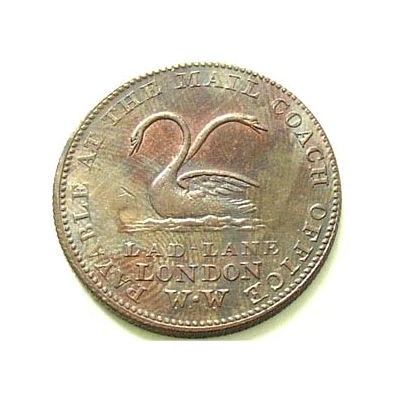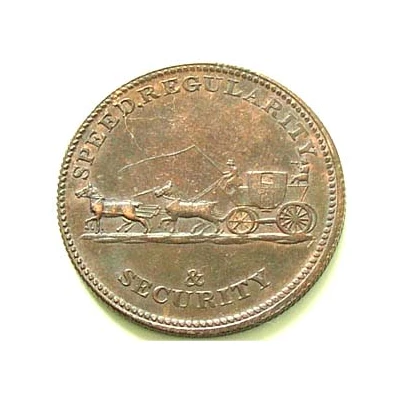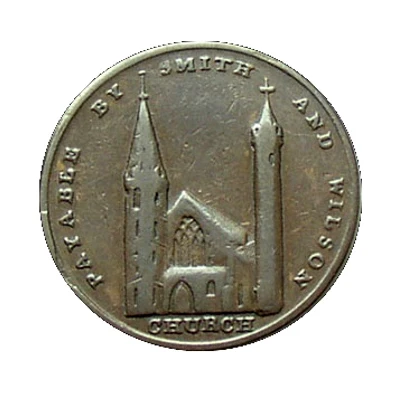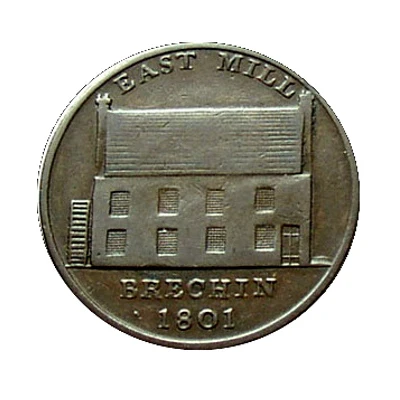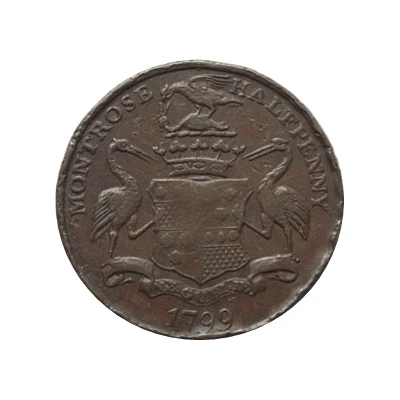


© ABC Coins & Tokens
½ Penny Angusshire - Montrose / Lunatic Hospital
1799 year| Copper | 9.23 g | 29 mm |
| Issuer | United Kingdom (United Kingdom, British Overseas Territories and Crown Dependencies) |
|---|---|
| Type | Token |
| Year | 1799 |
| Value | ½ Penny (1⁄480) |
| Currency | Currency tokens (1798-1816) |
| Composition | Copper |
| Weight | 9.23 g |
| Diameter | 29 mm |
| Thickness | 1.5 mm |
| Shape | Round |
| Technique | Milled |
| Demonetized | Yes |
| Updated | 2024-10-09 |
| Numista | N#90026 |
|---|---|
| Rarity index | 85% |
Reverse
A front view of large public building and courtyard from slightly above, the Lunatic Asylum, date below. Lettering above and below, plain border
Script: Latin
Lettering:
MONTROSE LUNATIC HOSPITAL
ERECTED BY SUBSCRIPTION
1781
Engraver: Thomas Willets
Edge
Plain with lettering
Lettering: PAYABLE BY ANDREW NICOL TOBACCONIST X
Comment
Rare Andrew Nicol’s Montrose copper Conder halfpenny token dated 1799.Andrew Nicol was a tobacconist with a shop in the High Street of Montrose.
Manufactured by Kempson, the die-sinker was Willets.
This copper token records Montrose’s Lunatic Asylum, now better known as Sunnyside Hospital. Following the lead of Mrs Susan Carnegie of Pittarrow and subsequent subscriptions, the Town Council of Montrose built the asylum in 1781 to house ‘lunatics’ and relieve pressure on the town’s prison. Soon, it housed lunatics from as far away as Edinburgh and became famous for specialising in mental health care. The site closed in 2011.
Interesting fact
The A Token ½ Penny (Angusshire - Montrose / Lunatic Hospital) 1799 coin from the United Kingdom is interesting because it was used as a form of currency at a time when there was a shortage of official coins. The coin was made of copper and weighed 9.23 grams, which was a significant amount for a coin of its time. Additionally, the fact that it was issued by a lunatic hospital in Montrose, Scotland, makes it a unique and rare piece of numismatic history.
